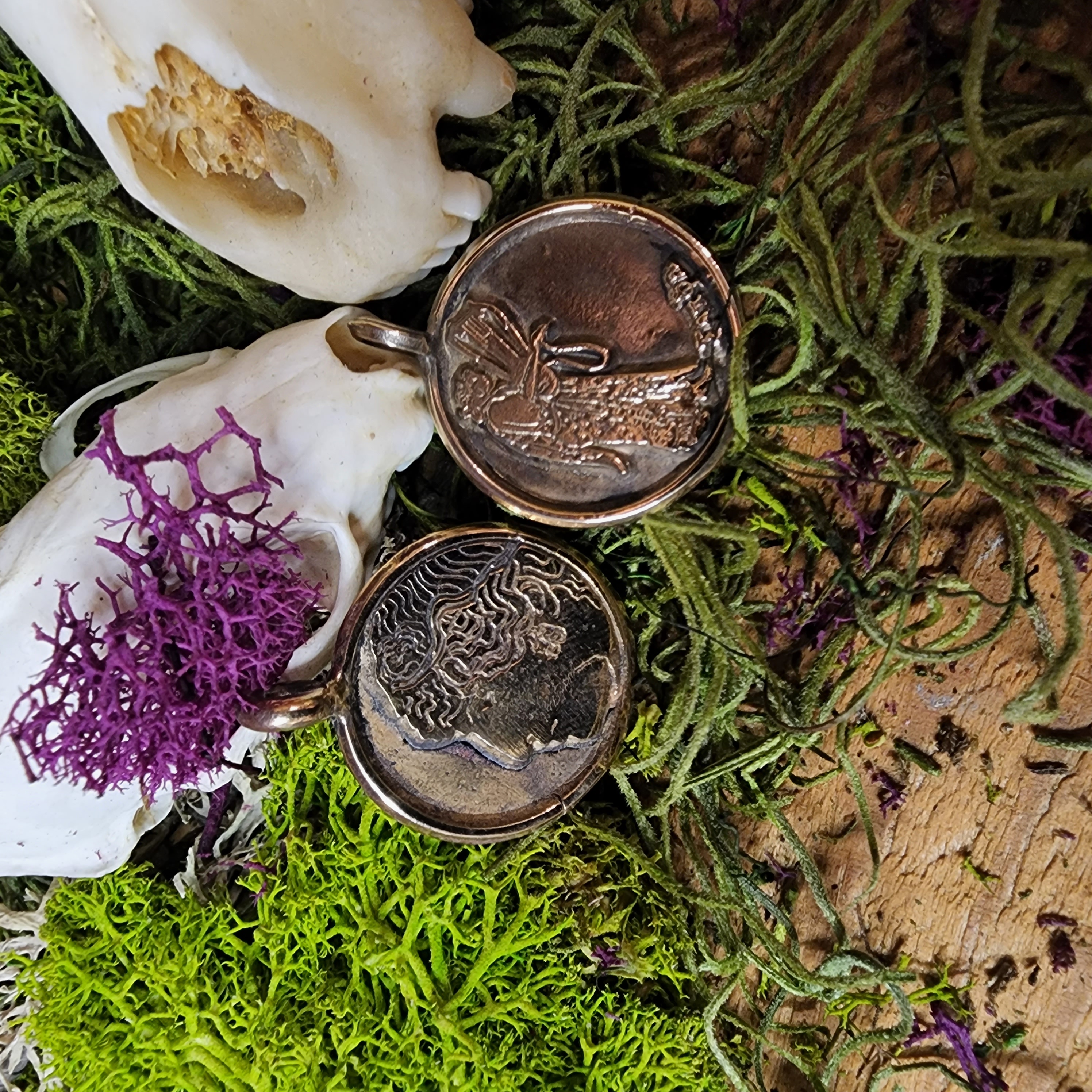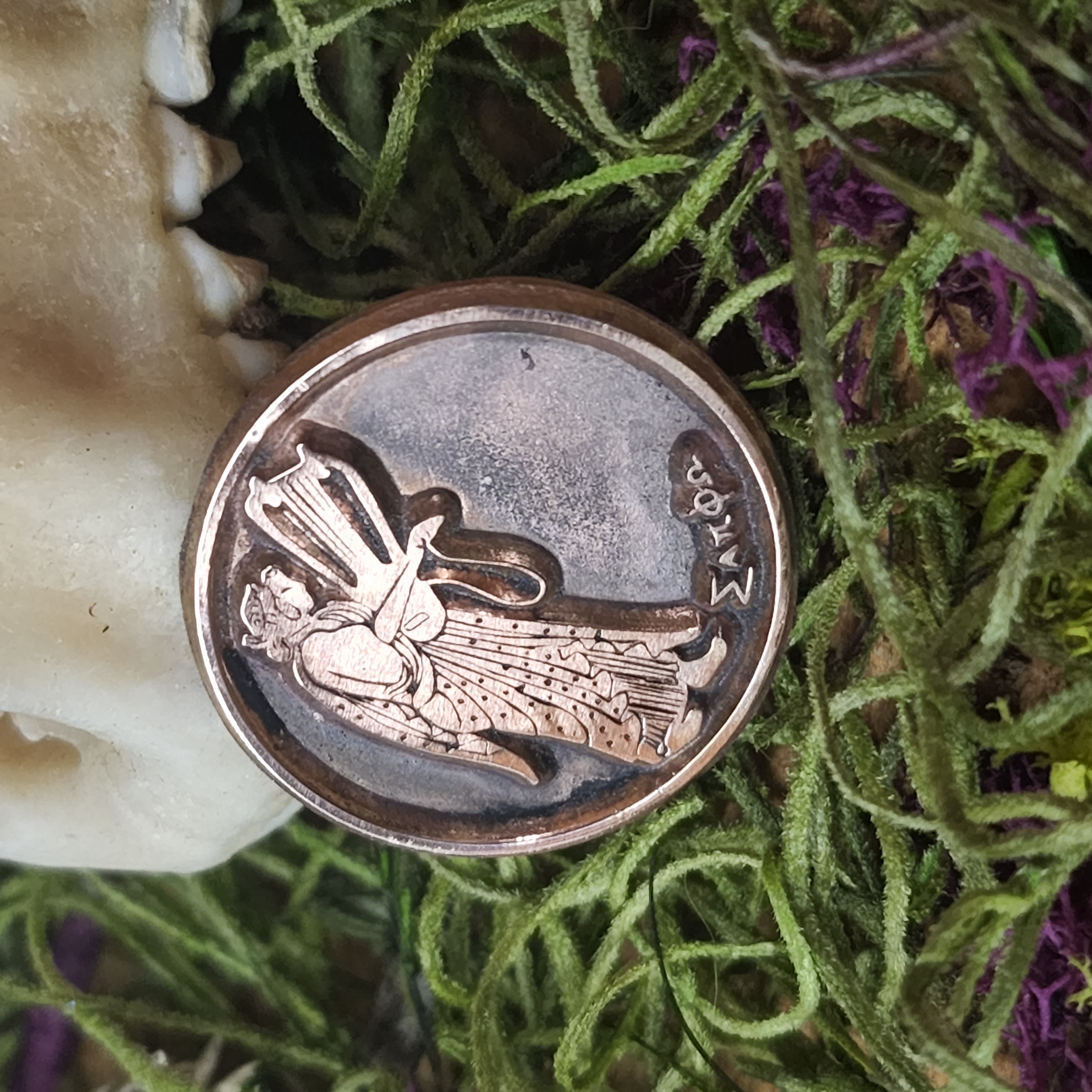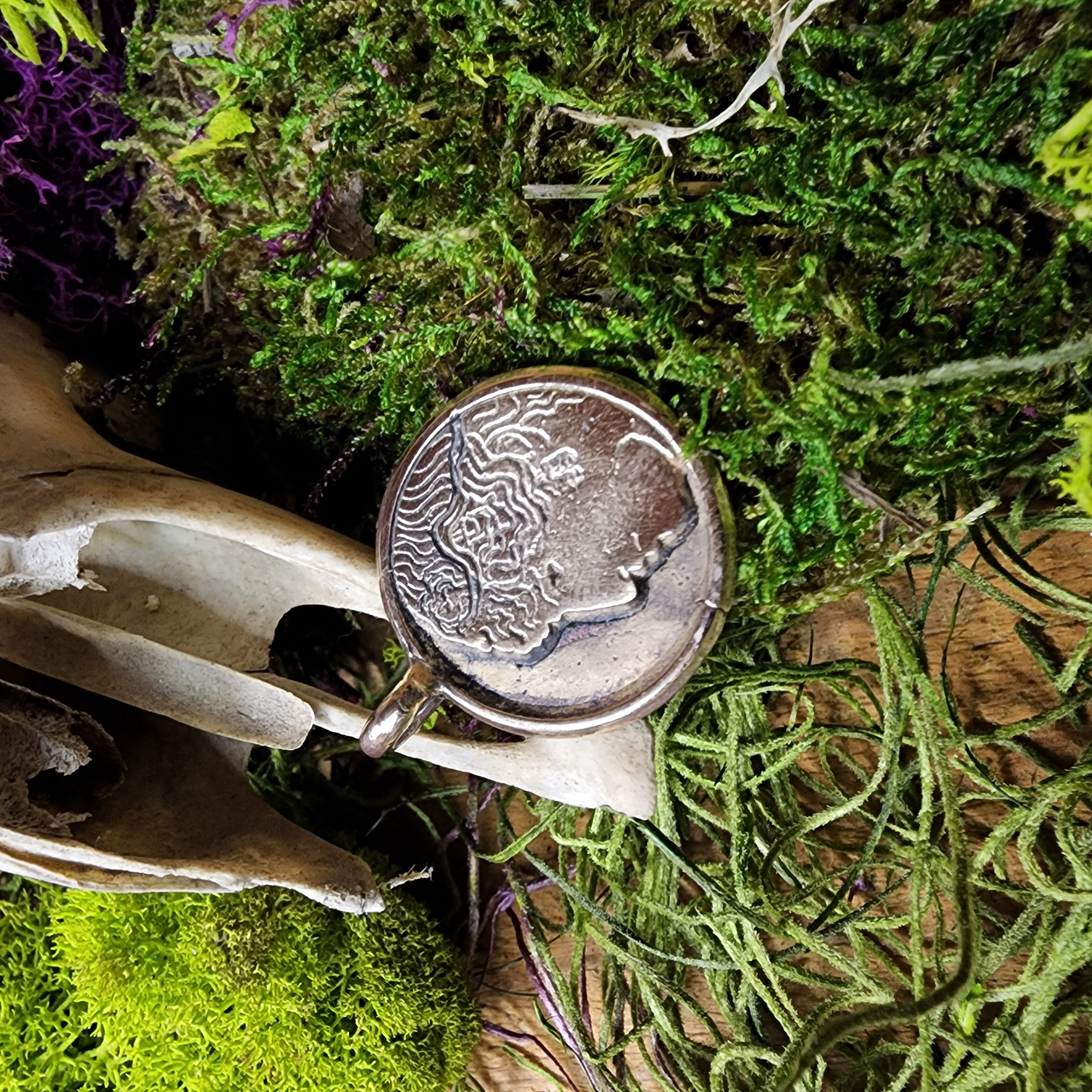In the ancient world, the power of magic was sometimes understood to be fueled by twistedness and inversion[1]: twisted, spiraled, and backwards writing; calling upon the restless dead for aid; binding. In a sense, I have been drawing on that for years: flaunting my difference, my Otherness, and making it into a source of distinction and recognition. I have, at times, less-than-half-jokingly referred to my gender identity as “witch” rather than as masculine, feminine, or even genderqueer in the sense that word is usually understood. I wear skirts instead of pants whenever possible, and make elaborate ritual robes for myself which double as “costumes” and festival garb, and I wear my peplos in effeminate fashion.
I am queer and I am a witch and people fucking know it. I am that I am. Certainly there are disadvantages to this, but there is power in it, as well.
And yet …. Gayatri Gopinath would argue that my “cross-dressing”[2] is, itself, an expression of another form of hegemony, which conflates same-sex desire with gender deviance.[3] Thus, disdaining the Euro-American emphasis on androgyny and inverted gender expression, she argues that what she describes as “hyperbolic femininity” can be and is a clear expression of queerness and queer desire among some women.[4] Because she is largely discussing this phenomenon in the context of popular South Asian culture and the tension between nationalist and diaspora populations, she cites a number of films for exempla of this phenomenon: Fire (1996), Ustav (1984), and Hum Aapke Hain Koun…! (1994), in particular.[5] This idea is particularly moving to me at this stage in my life, when, given my career choices, publically “cross dressing” as I currently do may well be barred to me.
I am not willing or able to live without being visibly queer. Interestingly, though, I have already been engaging in behaviors which could well be described as “hyperbolic masculinity”: adopting and adapting exceptionally butch tropes to serve my queer sorcery. For much of my life I have shaved with a particular brand of razor; to my annoyance, they have phased out my preferred model, and even if they had not, my environmentalist and feminist ethics, as well as my poverty, all agree that I should cease to patronize the company. So I have acquired an old fashioned straight razor from an estate sale, and am simultaneously learning the art of shaving with a deadly blade and the skill of keeping it adequately sharp. When not in use, the razor lives in the box on my altar with my Venusian seals and talismans.[6] Having recently given in to social pressure and conceded to the wearing of a neck tie—at thirty-two years of age, a (hypothetically) cisgendered-presenting male can’t get away with disdaining them in a “professional” or formal environment—I have committed myself to learning complicated and uncommon knots. My favorite, so far, is the Eldredge knot, which I find works particularly well with my Jupiterian tie. The Trinity knot is also fun, though I haven’t quite mastered it. My taste in the ties, themselves, is just as eccentric. I wear a vests and jackets at times and in places where they are entirely over-the-top: my co-ed campus where pajamas are as common as cargo pants and my favorite dive bars, for example. My chivalry knows no restraints of class or virtue: I hold the door open for everyone; I will come to the aid of anyone who asks nicely, male or female, “purest” virgin or even sluttier than myself; and I do the damnedest to keep my nose out of other people’s business unless that business is actually hurting someone else.
The thing of it is, I take a great deal of pleasure in my male body. It’s the constraints and strictures of masculinity which I despise: The presumption that I must dominate or be dominated. The presumed (and violently enforced) limits on my capacity for emotion and its expression: that being hurt by someone, or sympathetic to the pain of others, is proof of weakness and failure. The constant “threat” of loosing my Man Card—I burned that piece of shit long before I began identifying as a queer or a feminist—and all the Guy Rules I’m supposed to follow in order to keep it, and the way in which my refusal to play those games threatens the masculinity of others, and thereby exposes me to the risk of physical and sexual assault.
But my my body? The flesh which thousands of years worth of mystics and puritans have said that I must despise if I’m ever to touch the divine? I love it! The mass and strength of it: the wide shoulders and large hands, and the long, square lines.The warmth and shelter and pleasure I can offer by virtue of my size and above-average core temperature. All my hair; both that on my head and all the rest. The nipples which serve no purpose save for my pleasure, and being pierced. The push and pull of penetrating and of being penetrated.
It helps that I’m pretty, of course. But I think I’d like my body even if I weren’t.
And it infuriates me that the value of my flesh—the likelihood that I will be aided by the police, or assaulted by them; the quality of the medical treatment I will receive; my chances of promotion or even employment; and so many other things—depends on the degree to which I conform to the hegemonic expectations of others. I hate that my ability to survive in the world is dependent on playing into a rigged game that literally kills the losers.[7] I hate even more that, when I play, the game is stacked in my favor.
All of which is why I have, traditionally, drawn my power from my identity as an outsider, the monstrous Other. Sadly, though, that game may be played out for me.
My best hope, now, is to discover if I can draw power from from the other game, too. There is magic in the authority that flows from being perceived as a butch (cis-het) man. I just have to hope that if I’m very clever, maybe I can figure out ways of making certain that my share of that hegemonic current always undercuts the banks of its headwater. And I have to hope that if I’m very lucky and careful, as well, maybe I can do it without being poisoned when I drink from that most bitter well.
1 – Ogden, Daniel. “Binding Spells, Curse Tablets, and Voodoo Dolls in the Greek and Roman Worlds.” Witchcraft and Magic in Europe: Ancient Greece and Rome. Edited by Bengt Ankarloo and Stuart Clark. Philadelphia: University of Pennsylvania Press, 1999. p.29
2 – A problematic frame that implies there is some validity to the distinctions between gendered clothing, that the “line” I am “crossing” in my dress is in some way real.
3 – Gopinath, Gayatri. Impossible Desires. Durham: Duke University Press (2005). You should read it. It will make you smarter. It also digs into the way heteronomativity and nationalism are intertwined. Good stuff.
4 – Ibid. 104
5 – Ibid. 24, 103-13. Actually, it’s pretty much her core methodology, but these passages are particularly relevant.
6 – In an unrelated note, even if you don’t use a straight razor, I really recommend making the switch to an old school shaving brush and mug with a good organic soap: it’s actually cheaper than chemical shaving cream, works much better, and feels really, really good.
7 – Through race- and class-based differences in health outcomes, a racialized and classist prison industrial system, and institutionalized racial violence in the forms of police brutality and murder, and the unequal enforcement of the death penalty. There are months of research to be done on this subject, though, so, no: I’m not just going to cherry-pick you some links. The science is in; do your homework.



